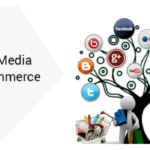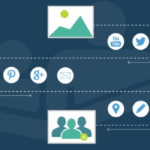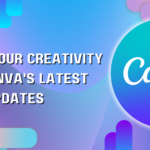Search Engine Optimization (SEO) is a constantly evolving field, and staying on top of the latest trends and changes is essential for any marketer or business owner looking to succeed in the digital space. With each passing month, new techniques and best practices emerge, and keeping up with them is crucial to maintain high search engine rankings and driving traffic to your website. This blog post will examine the most significant February 2023 SEO News and Updates From Google Search, Google Ads, Bing and etc…and what they mean for your online presence. From algorithm updates to new features on search engines, there’s a lot to discuss, and we’ll break it all down in a clear and concise manner.
We’ll look at the latest updates from Google, Bing, and other search engines, as well as recent studies and reports that shed light on the latest SEO trends. Whether you’re an SEO expert or just starting out, this post will give you valuable insights and tips to help you stay ahead of the curve in the ever-changing world
1st February | Bing announced more importance to lastmod in sitemaps
The Importance of Setting the “lastmod” Tag in Your Sitemap
If you’re running a website, it’s essential to have a sitemap that helps search engines understand the pages it contains and when they are updated. It’s highly recommended to adopt IndexNow to instantly inform search engines about the latest content changes on your websites.
For XML sitemaps, one of the most critical tags that you can include in your sitemap is the “lastmod” tag. In this blog, we will discuss the significance of the “lastmod” tag and provide guidance on its proper implementation.
1st February | Google announced enhanced video indexing report in Google Search Console
Last July we launched a new report in Search Console to help you understand the performance of your videos on Google and identify possible areas of improvement. Today, we are happy to share a few more updates to the report on Search Console to help you achieve those goals more effectively.
Video impressions overlay
To make it easier to understand the performance of your videos, you can now see in the Video indexing report the number of daily video impressions over time. The impressions are aggregated by page which means that if the same page appears multiple times in a single search result page (or a single Discover session), then we consider each appearance as an impression.
6th February | Google launched BARD
A MESSAGE FROM OUR CEO
An important next step on our AI journey
AI is the most profound technology we are working on today. Whether it’s helping doctors detect diseases earlier or enabling people to access information in their own language, AI helps people, businesses and communities unlock their potential. And it opens up new opportunities that could significantly improve billions of lives. That’s why we re-oriented the company around AI six years ago — and why we see it as the most important way we can deliver on our mission: to organize the world’s information and make it universally accessible and useful.
Since then we’ve continued to make investments in AI across the board, and Google AI and DeepMind are advancing the state of the art. Today, the scale of the largest AI computations is doubling every six months, far outpacing Moore’s Law. At the same time, advanced generative AI and large language models are capturing the imaginations of people around the world. In fact, our Transformer research project and our field-defining paper in 2017, as well as our important advances in diffusion models, are now the basis of many of the generative AI applications you’re starting to see today.
For more details
8th February | Google announced Multisearch Near Me
Google multi-search to gain near-me support
Soon you will be able to search by image for matches of places, stores or restaurants near you.
Google is expanding Google multi-search, a search feature Google announced several weeks ago to let you search by image and text at the same time, to support near-me types of queries. This will let you find local businesses in Google Maps and Google Search to see local search results.
What is Google multi-search? Google multi-search lets you use your camera’s phone to search by an image, powered by Google Lens, and then add an additional text query on top of the image search. Google will then use both the image and the text query to show you visual search results.
What is near me is multi-search. The near me aspect lets you zoom in on those image and text queries by looking for products or anything via your camera but also to find local results. So if you want to find a restaurant that has a specific dish, you can do so.
10th February | Google announced Lighthouse 10 and removed TTI (Time To Interactive) from lighthouse score

What’s new in Lighthouse
Lighthouse is a website auditing tool that helps developers with opportunities and diagnostics to improve the user experience of their sites.
Lighthouse 10 is available immediately on the command line through npm and in Chrome Canary. It will land in Chrome stable in Chrome 112 and in PageSpeed Insights in the coming weeks.
#Scoring changes
The venerable Time To Interactive (TTI) metric is being removed in Lighthouse 10, concluding the deprecation process started in Lighthouse 8. TTI’s 10% score weight is shifting to Cumulative Layout Shift (CLS), which will now account for 25% of the overall performance score.
TTI marks a point in time, but the way it’s defined makes it overly sensitive to outlier network requests and long tasks. Largest Contentful Paint (LCP) and Speed Index are usually better heuristics for a page’s contents feeling loaded than a count of active network requests. Total Blocking Time (TBT) meanwhile handles long tasks and main-thread availability more robustly, and while not a direct proxy, tends to correlate better with Core Web Vitals as measured in the field.
14th February | Google announced privacy sandbox
Google Launches Way for Android Apps to Track You Without Tracking You
Here’s a preview of the Privacy Sandbox, the newfangled way companies will follow you around the web that’s supposed to be better for your privacy.
Google unveiled a beta version of its “Privacy Sandbox” for Android Tuesday, part of a years-long effort to transform the business of the internet and make it harder for companies to feast on the buffet that is your personal data. Paradoxically, Google says the goal is to track everything you do online in a way that’s better for your privacy.
“Building on our web efforts, we’re developing solutions for digital advertising that limit user data sharing and don’t rely on cross-app identifiers,” said Anthony Chavez, vice president of product management for Google’s Privacy Sandbox initiative, in a blog post. “Over the past year, we’ve worked closely with the industry to gather feedback and begin testing these new technologies. Today, we’re entering the next phase of this initiative, rolling out the first Beta for the Privacy Sandbox on Android to eligible devices.”
15th February | Google published best practice guide for links
Link best practices for Google
bookmark_border
Google uses links as a signal when determining the relevancy of pages and finding new pages to crawl. Learn how to make your links crawlable so that Google can find other pages on your site via the links on your page, and how to improve your anchor text so that it’s easier for people and Google to make sense of your content.
Make your links crawlable
Generally, Google can only crawl your link if it’s an <a> HTML element (also known as anchor element) with an href attribute. Most links in other formats won’t be parsed and extracted by Google’s crawlers. Google can’t reliably extract URLs from <a> elements that don’t have an href attribute or other tags that perform as links because of script events. Here are examples of links that Google can and can’t parse:
Recommended (Google can parse)
<a href=”https://example.com”>
<a href=”/products/category/shoes”>
Links are also crawlable when you use JavaScript to insert them into a page dynamically as long as it uses the HTML markup shown above.
Not recommended (but Google may still attempt to parse this):
<a routerLink=” products/category”>
<span href=”https://example.com”>
<a onclick=”goto(‘https://example.com’)”>
Make sure that the URL in your <a> element resolves into an actual web address (meaning, it resembles a URI) that Google crawlers can send requests to, for example:
Recommended (Google can resolve):
<a href=”https://example.com/stuff“>
<a href=”/products“>
<a href=”/products.php?id=123“>
Not recommended (but Google may still attempt to resolve this):
<a href=”javascript:goTo(‘products’)“>
<a href=” javascript: window.location.href=’/products’“>
16th February | YouTube’s CEO resigned
A personal update from Susan
By Susan Wojcicki
A personal update from Susan on stepping back from her role as CEO of YouTube.
Editor’s note: This note was sent to YouTube employees earlier this morning.
Hi YouTubers,
Twenty-five years ago I made the decision to join a couple of Stanford graduate students who were building a new search engine. Their names were Larry and Sergey. I saw the potential of what they were building, which was incredibly exciting, and although the company had only a few users and no revenue, I decided to join the team.
It would be one of the best decisions of my life.
Over the years, I’ve worn many hats and done so many things: managed marketing, co-created Google Image Search, led Google’s first Video and Book search, as well as early parts of AdSense’s creation, worked on the YouTube and DoubleClick acquisitions, served as SVP of Ads, and for the last nine years, the CEO of YouTube. I took on each challenge that came my way because it had a mission that benefited so many people’s lives around the world: finding information, telling stories, and supporting creators, artists, and small businesses. I’m so proud of everything we’ve achieved. It’s been exhilarating, meaningful, and all-consuming.
Today, after nearly 25 years here, I’ve decided to step back from my role as the head of YouTube and start a new chapter focused on my family, health, and personal projects I’m passionate about.










